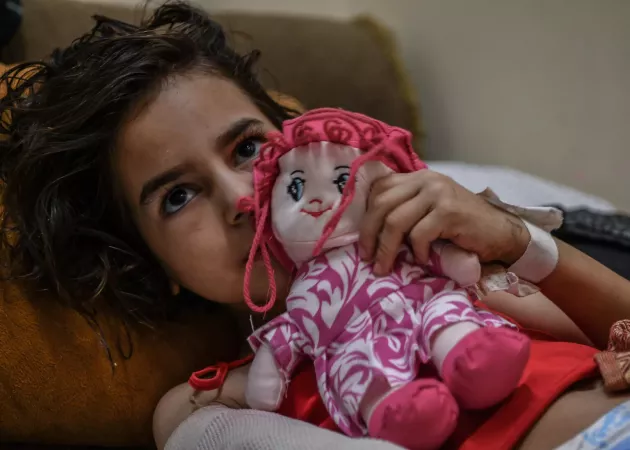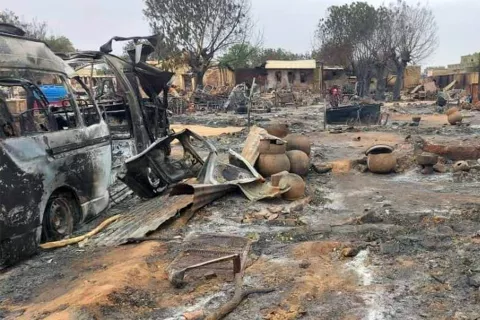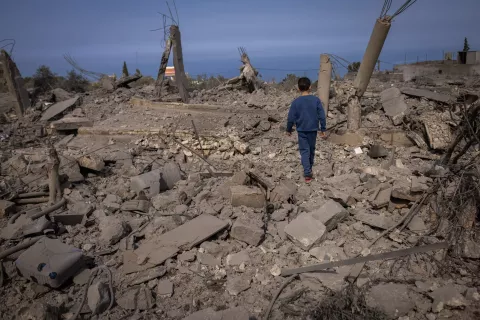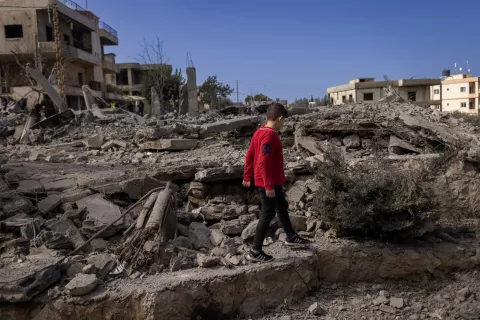Meaningful action to prevent the use of explosive weapons in populated areas could almost halve number of child casualties in conflicts
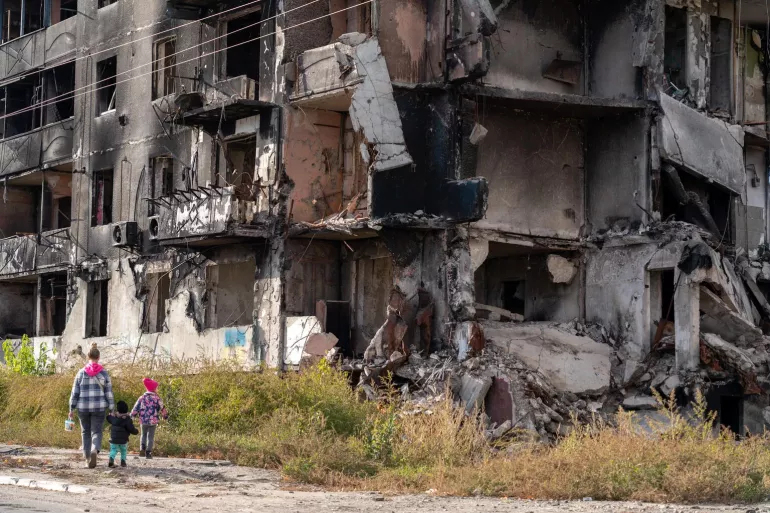
NEW YORK/OSLO, 22 April 2024 – Between 2018 and 2022, explosive weapons were responsible for nearly half - 49.8 per cent - of the more than 47,500 instances of children killed and maimed that were verified by the United Nations, in more than 24 conflict zones globally. The vast majority of these instances occurred in populated areas.
The use of Explosive Weapons in Populated Areas (EWIPA) poses an immense threat to children worldwide. As urban warfare increases, the use of weapons designed for open battlefields is now a common reality in cities, towns, villages, and other populated areas, with devastating effects on young populations. In the five years up to 2022, explosive weapons killed or seriously injured almost twice as many children as were killed or injured by gunshots and other firearms.
“The evidence is irrefutable—when explosive weapons are used in populated areas, children suffer profoundly, not just physically but in every aspect of their lives,” said UNICEF Deputy Executive Director Ted Chaiban. “That the use of explosive weapons accounts for half of all child casualties is not only a reminder of the catastrophic impact and dire consequences for children, but also illustrates the progress that could be made with meaningful action to prevent their use in populated areas.”
As countries meet this week in Oslo, Norway, at the first international follow-up conference to the Political Declaration on the use of Explosive Weapons in Populated Areas, which was adopted in Dublin in November 2022, this provides a crucial opportunity to better protect children, their families, and communities from armed conflict. Endorsed by more than 85 countries, the Declaration commits states to take steps to avoid civilian harm when conducting military operations in populated areas.
“Thousands of young lives are abruptly ended or forever altered each year,” said Chaiban. “Beyond children’s physical injuries and scars lie additional - often less visible - psychological, educational, and social impacts, that can persist throughout their lifetimes, creating cycles of hardship and suffering.”
In addition to direct injuries, the use of explosive weapons leads to broader social, economic and environmental degradation, severely affecting children’s access to essential services like healthcare, education, and clean water. The destruction of infrastructure necessary for survival and well-being results in long-term consequences for children’s development and the health of the community at large.
UNICEF is actively working on the ground in conflict zones to mitigate these impacts, delivering critical aid and support to the children most at risk. However, this can only achieve so much, and prevention is a critical aspect of ensuring all children are protected, requiring a robust and sustained international response.
UNICEF is calling for:
- All parties to conflict and those with influence over them, to protect and ensure respect for children’s rights including by ending the use of explosive weapons in populated areas.
- All Member States to sign the EWIPA Declaration and call on to Member States that are already signatories, to identify and adopt military measures, policies, and practices that reduce harm to children, and share them with other countries.
- Member States who are signatories to speak out about the devastating impact of EWIPA on children and promote the Political Declaration including by urging warring parties around the world to cease the use of EWIPA.
- Member States to provide sustained, financial support for programmes and interventions that will protect children from EWIPA including through injury surveillance, conflict preparedness and protection (CPP), explosive ordnance risk education (EORE), clearance, and victim assistance.
- Member States to refrain from transferring explosive weapons to warring parties that are likely to use them against civilians and civilian objects in line with the Arms Trade Treaty.
- Member States, international organizations and civil society to gather and share evidence and data, including casualty tracking and mental health, on the direct and indirect impact of explosive weapons on children to support the case for child protection.
“The ongoing commitment of global leaders and the implementation of the EWIPA Declaration are critical to turning the tide against the use of explosive weapons in populated areas,” said Chaiban. “As the international community continues to witness the unspeakable harm these weapons cause, we must take decisive action to protect our future generations. The cost of inaction is too high—a price paid by our children.”

